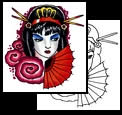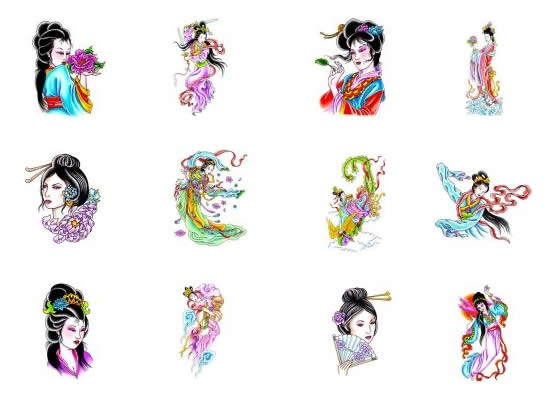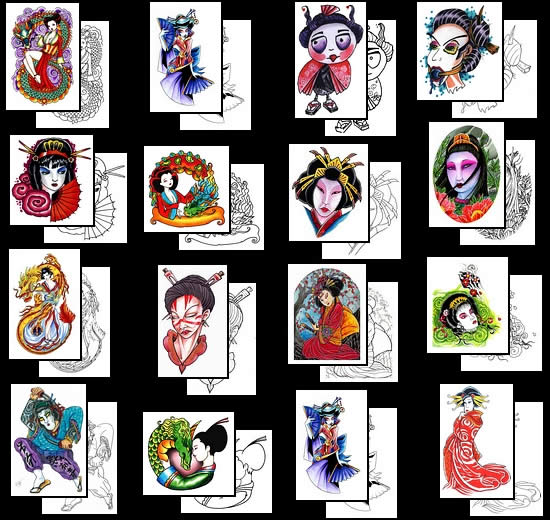|
|
|||
 |
|||
|
TATTOO DESIGNS & SYMBOLS - GEISHA GIRL TATTOOS
Tattoo Symbol Index - A B C D E F G H I J K L M N O P Q R S T U V W X Y Z Tattoo designs - G >> Geisha
Geisha tattoos find their way into designs on sleeves and torsos of both men and women. Not so much in Japan, though, where the geisha and her art are seen as tourist attractions, or as relics of the past. In feudal times men donned women's garb, painted their faces white and performed dances for the battle-worn samurai and weary noblemen, who sought entertainment for relief. Centuries later, these practices had become so popular that women joined the ranks of performers. By the 18th century, the geisha industry was becoming popular with men of status and power. At huge expense, the services of a geisha house would provide amusement and entertainment for clients and their esteemed guests in the exclusive teahouses - ochaya - of Kyoto. A true geisha went through years of training for her art, and the training was expensive. Poor families were sometimes approached by geisha houses offering money for young girls. The young apprentice, called maiko, became skilled in playing traditional musical instruments and mastering ancient dance. Singing, calligraphy, poetry, tea ceremonies, flower arrangement and the correct serving of drinks were among her many skills. She was required to listen and sometimes engage intelligently in conversation with her clients and patrons, and to honour a code of silence with regard to what she heard. The success of a geisha depended on her talent, sophistication, beauty, and skilfulness in etiquette. The personal life of a geisha was hardly separate from the geisha house to which she belonged. Though she was permitted to take a patron, usually a wealthy man who could afford a costly geisha mistress, as danna, or lover, a geisha was never contracted for sexual favours. It was not unusual for a geisha to remain a virgin all her life. In spite of lurid speculation, her life was extremely demanding and not suited to casual love affairs. During the 1930s, as Japan began to embrace industrialization and western trends and fashions, geisha houses came to be viewed as old-fashioned. Then, with the onset of WWII and the American occupation of Japan, the highly exclusive world of the geisha was shattered. The geisha tradition was often misconstrued as sexual, due in part to it taking place behind closed doors. For some prostitutes, the geisha's prestige and favourable image were 'borrowed' for their own ends, giving rise to further confusion as to the geisha's true social role. Though the traditional training methods still exist today in Japan, most geisha training is voluntary, and greatly reduced in duration and content. Geisha districts are rare and costly to run, and performances are mostly reserved for tourists. Still, the traditional trademarks of the geisha -- white face, red lipstick, pretty kimono and obi, and the ornate black wig, still enchant the Western visitor who can dress up in full geisha costume, wig included, when touring Kyoto, the traditional geisha centre in Japan.
Get inspired by some great images and photos in our Geisha Inspiration Gallery See also: Japanese Tattoo Designs, Japanese Tattoo Index
Choose your own geisha tattoo design from Tattoo-Art.com. Lots of great Geisha Tattoo design ideas are available to buy at Tattoo Johnny Tattoo designs - G >> Geisha Tattoo Symbol Index - A B C D E F G H I J K L M N O P Q R S T U V W X Y Z |
||
| Celeb Tattoos | Facts & Stats | Designs & Symbols | History | Culture | Links | Tattoo Galleries | Contact | |||
|
Copyright © 1999- www.vanishingtattoo.com All rights reserved. |
|||








